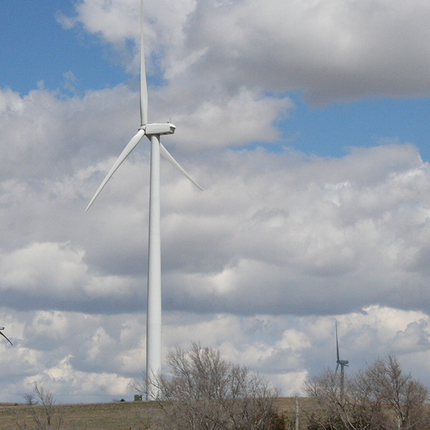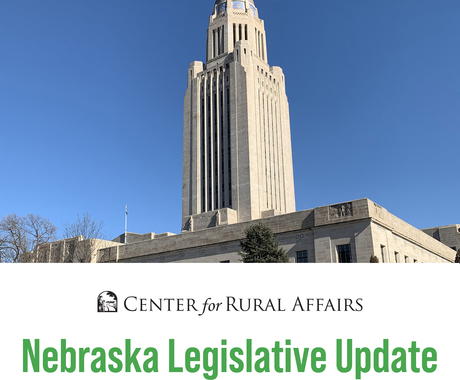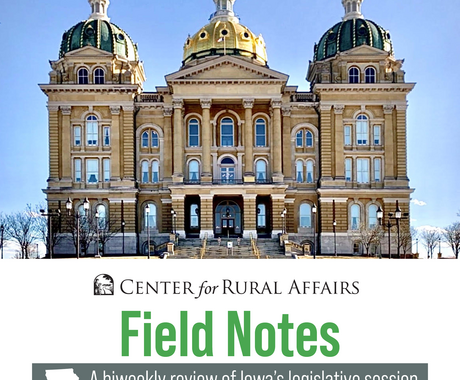By Henry Miller, former staff member
In Nebraska, residents may be more connected than we realize. We share ownership of our power. This means Nebraskans have a voice in energy production, transportation, and usage.
On June 13, the Center for Rural Affairs hosted a community discussion in Broken Bow, Nebraska, on these energy issues.
Entering Broken Bow, it’s nearly impossible to miss the giant white turbines that rise above the landscape. Equipped with a thriving downtown and productive agricultural land, the community has a diverse group of farmers, ranchers, and entrepreneurs. This area represents the geographical diversity of Nebraska and the spectrum of rural interests.
Director Thomas Hoff, representing Subdivision 5 on the Nebraska Public Power District (NPPD) Board of Directors, was on hand for our event. We invited stakeholders to share their ideas and concerns.
Solar energy was brought up early in the conversation. Some attendees felt their operations were too small for personal power generation, or to build their own systems.
Creating a community-oriented solar energy project was suggested as an alternative. This kind of project allows the costs of energy production to be shared among community members.
“Community solar allows a lot of people to participate, and it offers an opportunity for everybody to contribute at various levels,” said Carol Brehm, of Municipal Energy Agency of Nebraska, or MEAN.
Nebraska ranks in the top five nationally for wind power capability, and solar power ranks high as well. Residents can invest in renewable energies early in their development. However, some attendees had concerns in regards to the risk.
Upon concluding the conversation on community solar and wind projects, the discussion pivoted toward NPPD’s plan for the next five years.
Hoff explained that NPPD is in the process of building a transmission line in the area.
“Whatever energy we choose to invest in needs a transmission line to transport the energy produced,” he said.
Director Hoff used an excellent analogy to describe transmission line overload.
“When we are pumping water out of a one-inch hose, it doesn’t matter how much pressure we apply, because only so much water will run out,” he said. “Comparing to energy, we need a two-inch hose. This is why we are investing in transmission.”
As the only state in the U.S. with public power, we have a unique opportunity to collectively work to create a solution constructed by Nebraskans for Nebraska's needs.
The community of Broken Bow experiences several of the energy situations so many rural areas face, and also embodies the potential and problem-solving abilities of our small communities here in Nebraska.
Photo: Wind turbines rise above the landscape near Broken Bow, Nebraska. | Photo by Lu Nelsen




